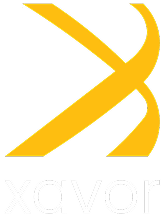
Microsoft SharePoint has garnered a reputation for being a resourceful tool for any organization. Be it project management, storing information, or building a content management system, SharePoint as CMS is the common solution. This multipurpose nature of the software makes it a low-cost alternative to a number of organizational software such as CRM, Workflow Management and others.
This blog talks about how SharePoint can be a cost-effective tool for organizational management by taking on multiple roles.
1. SharePoint for Enterprise Content Management:
Content Management is a well-known feature of SharePoint. By combining several of the document storing and sorting abilities, SharePoint becomes a fairly useful Enterprise Content Management system.
Organizations produce content in various forms such as documents, emails, images, videos etc. We combine four basic functions of SharePoint to form an ECM. The Document Manager serves as the central repository for documents and maintains several versions as well as editor information on each document for security. Managers can streamline collaboration on documents within an organization as well as provide access to external users.
The Digital Media manager allows users to access multimedia files and share them across the organization. The media libraries created in SharePoint can also be optimized according to metadata, project type and other unique identifiers to sort and store media easily.
SharePoint as CMS also allows for Web Content management as users can publish from within SharePoint as they create content. Website design, schedules and information collected through online forms; you can address everything through the Web Content Manager.
Lastly, for efficient Enterprise Content Management, organizations can incorporate Records manager to keep up with compliances and safely store important records and legal documents, by controlling access to these records.
2. SharePoint for Customer Relationship Management:
It is possible to create an entire CRM within SharePoint with some very basic development. The advantage of doing this is to save on cost and have a centrally managed system through SharePoint.
In order to use SharePoint as a CRM, you just need to create a system where customer data is shown and can be personalized for each user. Then, you need to categorize data by active and inactive customers.
All of this is possible by designing a website that manages the inflow and outflow of customer data. You can edit the user interface, design and experience for employees according to preference as well.
This strategy to create a CRM within SharePoint is a popular strategy for a low-cost CRM alternative. Another benefit of using SharePoint as a CRM is that it already acts as a central repository for customer data so it can be easily fetched for the purposes of the CRM.
3. SharePoint for Human Resource Management:
SharePoint has the potential to be an effective Human Resource Tool. Firstly, it comes with in-built features to create extensive hierarchy charts. The same charts can be used to create and enforce workflows within the organization. It also acts as a host for all employee information, and control access for each user.
SharePoint as an HRMS can perform a number of tasks. It acts as an Employee Information repository, which employees themselves can access to add and edit personal data, view contractual details as well as other personal notifications.
Payroll Management is also possible while using SharePoint as HRMS. It enables tracking salary details for every employee as well as changes made to them. HR admins can also internalize approvals for salaries through SharePoint. For special functions such as calculating commissions, overtime pay etc., users can feed data and analyze it quite easily. This makes it valuable for the purpose of payroll management.
SharePoint also has the capability to manage employee records such as official documents, promotions and details for employee benefits.
With these features combined, it becomes a comprehensive HRMS tool that organizations can leverage from a cost-saving perspective.
Conclusion:
By putting on multiple hats, SharePoint as CMS has the ability to simultaneously perform the core operational features of any modern organization. Users can develop each of the above stated systems within the same Windows and SharePoint license, thus significantly cutting down costs. This cost saving is amplified further by considering that the organization does not need to purchase different user licenses for a software dedicated to a function. Rather, users can access all functions can with the same license.
SharePoint does not offer all the features of leading organizational software in each category, but it is certainly the most adaptable and well-rounded software that an organization can leverage to manage costs and operate in the modern business environment.
